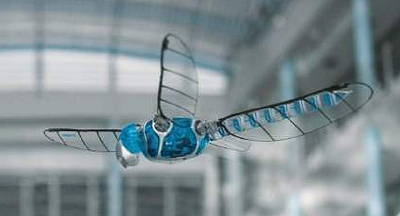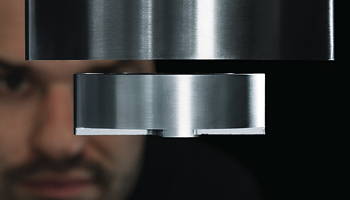
The dragonfly-based contraption, called BionicOpter, uses four wings to fly in any direction. According to Dr Heinrich Frontzek, Festo’s head or corporate communications, it has been “a huge challenge” to develop the first flying machine that combines the characteristics of a helicopter, plane and glider. The device, which has a 63cm wingspan, a 44cm-long body and weighs 175g, requires 13 degrees of freedom to be controlled.
The dragonfly incorporates eight servomotors as well as memory alloy actuators. Each of its four wings, which beat at 10–20Hz, has its own controller and can be adjusted independently, allowing it to slow down and turn abruptly, accelerate swiftly and even fly backwards. Unlike a helicopter, it does not need to tilt forward when it changes from a hovering to a flying motion.
Despite its complexity, the dragonfly can be operated intuitively from a smartphone.
Festo will also use the Hannover Fair to demonstrate several industrial applications for high-temperature superconductors, including: friction-free linear slides in which a carriage “floats” above a track; a two-axis motion system; and a 3D handling system that can operate through materials such as Plexiglass to provide movements in a hermetically sealed environment.
“Festo is currently conducting research into the potential of superconductor technology to develop applications for automation technology,” Frontzek explains

Superconducting materials lose their electrical resistance below a fixed transition temperature. If a superconductor is cooled below this temperature and subjected to an external magnetic field, the superconductor “freezes” the magnetic field at a predefined distance, thus creating a floating condition (shown above). If you then try to move the superconductor, it returns to the “stored” position.
The three research projects at the Hannover Fair will demonstrate this characteristic of a frictionless, stable bearing without the need for complex measurement and control technology.

